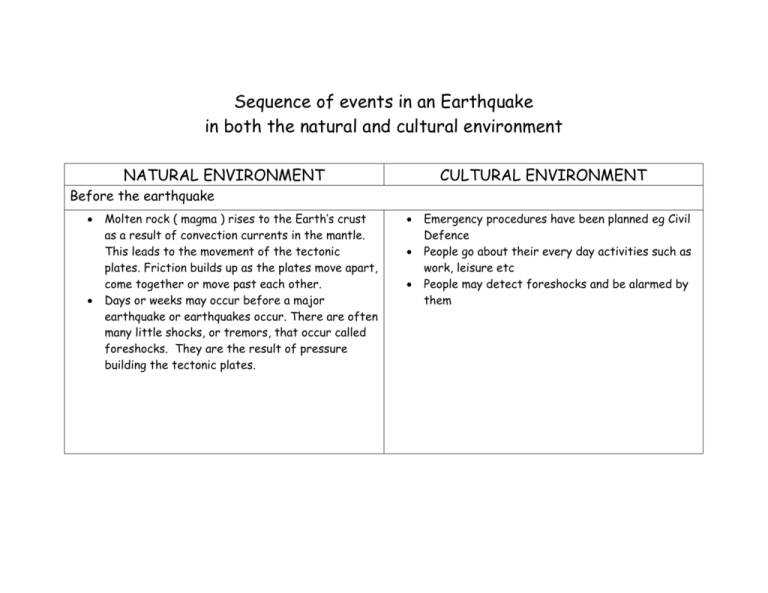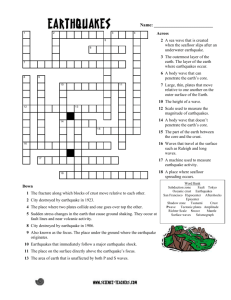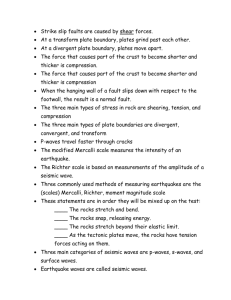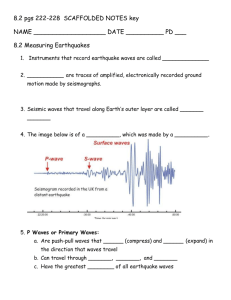Sequence of events in an Earthquake
advertisement

Sequence of events in an Earthquake in both the natural and cultural environment NATURAL ENVIRONMENT CULTURAL ENVIRONMENT Before the earthquake Molten rock ( magma ) rises to the Earth’s crust as a result of convection currents in the mantle. This leads to the movement of the tectonic plates. Friction builds up as the plates move apart, come together or move past each other. Days or weeks may occur before a major earthquake or earthquakes occur. There are often many little shocks, or tremors, that occur called foreshocks. They are the result of pressure building the tectonic plates. Emergency procedures have been planned eg Civil Defence People go about their every day activities such as work, leisure etc People may detect foreshocks and be alarmed by them During the earthquake A sudden jerking movement between two plates will result in severe movement of the ground above. This shaking generally lasts for less than 40 seconds. Primary waves radiate in all directions from the focus on the earthquake. There are three different types of seismic waves: P waves, S waves and L waves. P waves (primary waves) travel rapidly. They are sound waves and can move through solids, liquids and gases. Although they are the first waves recorded by instruments they do very little. S waves (secondary) can be very destructive. An S wave only travels through solid material. These waves cause the ground to shake violently both vertically and horizontally. L waves (long waves) are slower than p waves and s waves, but they can also be very destructive. Panic People may be injured or killed Buildings can collapse, people’s property can be damaged or destroyed. Infrastructure may be damaged eg communication systems may be disrupted; cracks or fissures may damage roads and railroads; bridges may collapse; gas and electricity lines may be cut. After the earthquake The major earthquake is usually followed by aftershocks. These are earthquakes of a smaller magnitude. These aftershocks can be strong enough to cause further destruction. Emergency services respond. Rescue teams try to save trapped people in the following days. Unsafe areas are evacuated and a state of emergency may be declared. People begin the clean up process, such as clearing debris. Aid supplied to homeless people. Medical supplies distributed and treatment provided to the injured. Water and sewerage systems (also communication) returned to normal. Weeks and years after the earthquake Tectonic processes continue to operate below the surface of the earth creating the potential for earthquakes to occur again. Rebuilding of buildings, roads and services. Emergency systems are reviewed and where necessary improved. Research is conducted to improve building structures in order to reduce future earthquake damage eg the invention of lead rubber bearings to stabilize buildings. Continued research into the detection of earthquakes so that people can be warned. People in the area go back to their normal lives.








